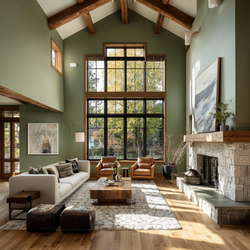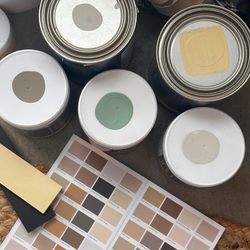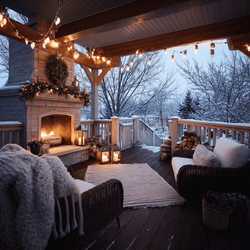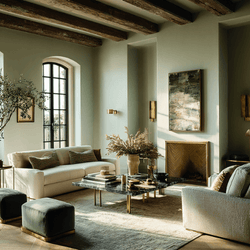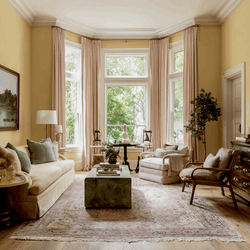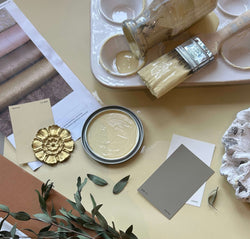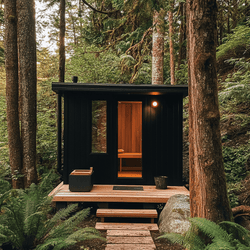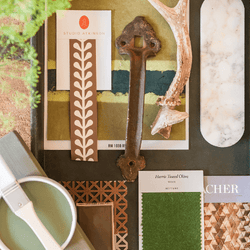Fall Feature Color: Merlot
A designer’s approach to a rich, full-bodied colour
By Philippa Radon
I recently discovered that I’m part Danish. My mum casually proffered this nugget of information during her recent stay with us as we were drinking wine and prepping for dinner. It struck me a few days later how much a seemingly small piece of family history managed to fit so perfectly into the irregular shaped, curious space in my internal jigsaw puzzle.
I have always had an unexplainable affiliation for winter, a connection to nature and stark landscapes and contrasts of the deep, intense forest against the inevitable white of snow. Not surprisingly, I gravitate to high contrast patterns and colour pairings. Shorter days permit the indulgence to sit back, get quiet and take reflective stock…to regenerate and ruminate on the small, magical moments that slip away while I’m busy being busy. I believe the Danes have something worth exploring with their Hygge culture.

So, in preparedness for seasonal change, lowering temperatures and the closing of the decade, nature’s paintbrush begins teasing us with a rich, vibrant palette that sets the colour headlines for the final quarter of 2019.
SPOTLIGHT ON MERLOT
Merlot is one of the most intoxicating and classic colours of the season. This mulled, slightly muted damson -- also referred to as maroon, aubergine, currant or burgundy -- is perfect for a fall design refresh. It evokes a warmth and richness that’s perfectly suited to rooms with diffused light that will not warm under any other condition other than with a rich colour to lead the way.

Its more subdued tones can vary from a purplish red to a bluer purple into something very intense with almost deep cherry undertones. (Note: knowing the undertones helps greatly when determining your colour scheme).
PERFECT PAIRINGS
Pairing #1: Contemporary
Mulberry (C2-507) paired with strong contrasting colours Stout (C2-965) and Architectural White (C2-516) add a more contemporary feel to this berry-like hue.

Pairing #2: Opulent
Rich Tumeric like shades like Torch (C2-618) in small quantities can add a stronger and dominant accent -- and a feel of opulence.

Pairing #3: Classic
Warm grey-blue like Magnet (C2-967) with Merlot (C2-503) is a bit less anticipated and gives a new direction to a classic, even with a warm Hermes-like burnt orange like Bonanza (C2-597) for added interest as a third colour.

DESIGNING WITH MERLOT
1. Furniture - Merlot is also a great colour for a furniture piece, accented with a contrast colour on draw interiors, perhaps a blue-grey or warm neutral like Motley (C2-797).
2. Tonal - Varying shades of purples, reds, and wines can create a modern color statement while using traditional, classic colors.

3. Exterior - I also am reminded that certain shades of Merlot, in the often more reddish undertone, is a classic traditional exterior house colour. Black shutters and front doors, off white/pale cream trim and field colour in a Merlot is a trusted, historical presentation.

4. Wallpaper Inspiration - Exploring different wallpaper options for colour inspiration is a worthy exercise. Timorous Beasties is known for their incredibly creative, diverse patterns like their Ex Libris wallpaper, which contains a mid-tone merlot with greys and touches of black, white and purplish-blue, bringing a classic pattern into a more contemporary vibe.

Looking at certain forms of art on mediums like wallpaper, where colour palettes have already been painfully studied and experimented with offers a wonderful opportunity to explore colours' playful diversity.
FASHION
Deep red tones are walking the runway this fashion season, in tailored wide pantsuits, sleek velvets, and chic tonal suits from designers like Tom Ford and Oscar de la Renta.

FAVORITE MERLOT WINES

For those who enjoy a good glass of wine while pondering new paint palettes, these suggested lighter reds and richer whites lead us into cooler evenings - perhaps with a pairing of gooey cheese, some black grapes, and warm Fairisle blanket.
Merlot is a dark blue-colored wine grape variety, that is used as both a blending grape and for varietal wines. The name Merlot is thought to be a diminutive of merle, the French name for the blackbird, probably a reference to the color of the grape.
Josh Cellars Merlot 2017
Hunt & Harvest- Napa winery Merlot
Charles Krug 2016 Napa Valley Merlot
SHOP C2 MERLOTS






